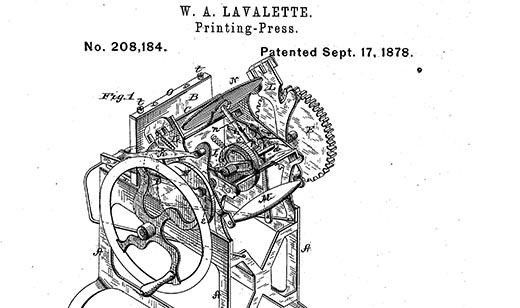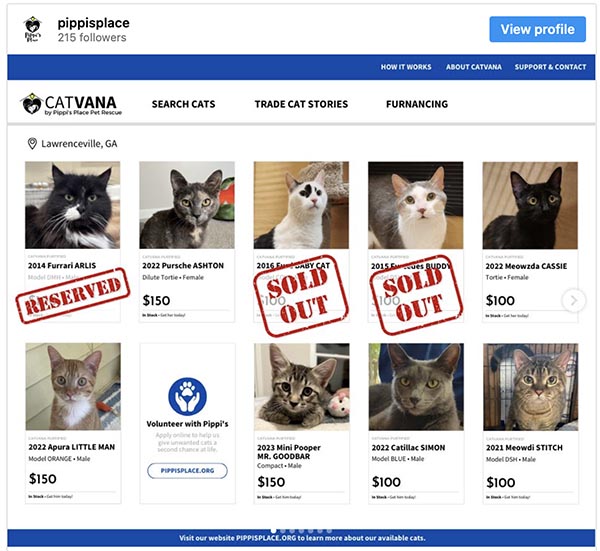Throw In the Towels
Thursday was “Towel Day,” the annual celebration of the life and works of Douglas Adams, creator of The Hitchhikers Guide to the Galaxy. And, via Gizmodo, a special print edition of the five-book trilogy is on its way.
Tomorrow, the Folio Society is releasing a special edition of Adams’ trilogy in five parts, featuring “70 illustrations by Jonathan Burton, 35 unique to these new volumes, and an exclusive preface by inspirational physicist Carol Rovelli.”There are just 750 of these sets being created; they’ll be hand-numbered and signed by the illustrator “on a limitation tip shining with holographic silver.” The binding designs, also created by Burton, are similarly lavish, “blocked in an eye-catching rainbow of foils and, arranged next to each other, they create a pleasing single image. The five volumes are presented in a display box fit for the President of the Galaxy himself, part-bound in glittering blue cloth with an explosion of silver stars on the interior. A transparent window—with DON’T PANIC inscribed in large friendly letters—allows a peek at the foil-blocked spines. Signed by the artist, this splendid edition is completed with a unique print of the Guide itself.”
Each copy is numbered and you can easily guess what the most prized number will be.
Code (Dis)comfort
Sorry, Heidi, it looks like the QR code just isn’t all that cool any more. Says the NY Times:
Like other restaurant owners and managers around the country, Mr. Sayre put digitalized menus on all his tables in the early, don’t-touch-anything stage of the pandemic, when contactless service was considered essential. But over time, fewer and fewer diners have paid them any notice.
“If they had a choice, I would say, 90 percent of customers would say: ‘I’d just rather place my order with you.’”
And there is data.
MustHaveMenus, a menu management and printing platform with about 7,000 customers across the United States, has seen a falling off in the use of the QR codes it provides to restaurants, said Mark Plumlee, the senior content manager. From April 1 to May 16 of this year, the total number of scans has dropped by about 27 percent compared with the same period in 2021.
Fewer restaurants are creating new QR menus, he said. And about 75 percent of their existing QR codes are essentially dormant, with fewer than 90 views in the last year. (Half had fewer than five.)
Ultimately: “They are almost universally disliked,” Ms. Hawley said.
Sure, they served a purpose during the “let’s go contactless” during the recovery from the pandemic, but we’ve pretty much given up on any of that now. Not sure about this:
One reason is etiquette. Everyone knows it’s rude to take a phone out at a table, but that’s what a digital menu demands. And having to make a special request for a paper menu is awkward.
From what we’ve seen, among certain generations, it’s rude not to be on a phone in a restaurant.
Patent Pending
WhatTheyThink contributor Mark V (heir to the throne of Mark IV) points us to a perhaps unsung hero of the history of printing technology. William A. Lavalette was a Black inventor in the late 19th century who, in 1878, was awarded patent number 208184 for improvements to the printing press and number 208208 for his variation of a printing press.

Photo Courtesy: N. Peters, Photo-Lithographer. Washington, D.C.
Sadly, not much is known about Lavalette—not even his date of birth—and no verifiable photo exists.
At the time his patent was published he is said to have resided in northeast Washington during 1878, yet very little discoverable details exist about his life before or after.
It was a fate that befell many Black inventors of the day. It is known that he died on January 9, 1914, at the age of 73.
But he leaves behind his two patents and his contribution to print history as a legacy.
Dot Matrix
One crucial aspect of today’s printing industry—especially signage—is wayfinding and other display graphics that contain braille lettering or other elements that aid readability for the blind or partially sighted. (Not all blind people read braille and rely on raised lettering.) But braille and other types of printing elements have a long history in the industry—and are now getting their due as Louisville, Ky.’s American Printing House for the Blind museum breaks ground on a $55 million expansion and reimagining as a new museum called The Dot Experience. From Spectrum News:
“The museum is going to house APH’s Helen Keller archives, items from Stevie Wonder. It’s going to introduce to people how people use braille, what braille is,” Ceremony Emcee Joe Strechay told the enthusiastic crowd Monday morning.
The APH museum was founded in 1858 “as the world’s largest nonprofit organization creating accessible learning experiences through educational, workplace, and independent living products and services for people who are blind and low vision.”
“I think this is absolutely huge for the Blind community not only here in Louisville but across the world,” Jean Brown of Indianapolis told Spectrum News 1. Brown is a Chapter President for the National Federation for the Blind. Her husband Ron Brown is also a leadership member of the national organization. Brown and her family traveled from Indianapolis to experience the ground breaking in person.
The Dot Experience is expected to open in 2025.
It’s a Nice Day for a Wheat Wedding
There probably is no better example of a “single-use” garment than a wedding dress (unless you’re Miss Havisham). Granted, they don’t usually end up in landfills like many other single-use garments (unless the marriage was a particularly fraught one), but still, they sit largely unused in closets. One “eco-designer” has decided to go in a more sustainable direction. Via The Guardian, Zena Holloway, a former ocean photographer who witnessed firsthand the scourge of plastic pollution, has created a biodegradable wedding dress out of the roots of wheatgrass.
She said: “I saw the growing amount of plastic in the ocean over the years and became upset about the materials we were using.”
After growing mushrooms in her basement, she became fascinated by the mycelium – the root-like structure of a fungus – noticing “how it grew into the substrate and the roots, and how it joined up to form new materials. And then I was in the river doing a river cleanup with my camera and through the lens I saw bright red willow roots that were growing into the water.
“And because my head was in that place, thinking about the binding property of roots, or binding of mycelium, the penny dropped.”
So she began growing roots and studying how it could be developed into a weavable material.
She grows wheatgrass over different materials, such as corals and beeswax, so it will adopt the shape of the natural moulds. When enough roots have grown, she treats it with beeswax, to give it a natural strength. The resulting pale, twisting material looks ethereal, like bleached coral.

“The concept for this dress,” Holloway said, “is a sustainable wedding dress. If they got married by the ocean, for example, she could sustainably trash the dress and … get in the water and all the fish would just eat it, and it would just become part of the ocean.”
Let’s hope the bride doesn’t decide to do the same thing with her husband.
Off On the Radio
Last week, we linked to an item that indicated that automakers were discontinuing AM radio in new models, especially electric vehicles. Well, Ford at least has reversed that decision and will in fact keep the band in new vehicles, and it’s even restoring it in some 2023 models. Says AP:
CEO Jim Farley wrote in social media postings Tuesday that the company is reversing a decision to scrub the band after speaking with government policy leaders who are concerned about keeping emergency alerts that often are sounded on AM stations.
“We’ve decided to include it on all 2024 Ford and Lincoln vehicles,” Farley wrote on Twitter and LinkedIn. “For any owners of Ford’s EVs without AM broadcast capability, we’ll offer a software update” to restore it, Farley wrote.
The move comes after a bipartisan group of federal lawmakers introduced a bill Wednesday calling on the National Highway Traffic Safety Administration to require AM in new vehicles at no additional cost.
Not everyone is on board.
The trade group pointed to the Federal Emergency Management Agency’s Integrated Public Alerts and Warning System, which can distribute safety warnings across AM, FM, internet-based and satellite radios — as well as over cellular networks.
The alliance said the bill gives preference to a technology that’s competing with other communications options.
Actually, it sounds like it’s making it able to compete with other technologies. We still think they should bring back the 8-track tape player.
Graphene In the House
Was it a good week for graphene news? It’s always a good week for graphene news! Now you can bring the power and magic of graphene into your very own kitchen, with the first “graphene-powered appliance.” Graphene Square Electronics has launched a crowdfunding campaign on Kickstarter to raise funds for its “Kitchen Styler” which uses graphene as its sole source of heat. From (who else?) Graphene-Info:
Those who wish to experience cooking with graphene can contribute to this project and help kick off this novel application. The Graphene Styler appears stylish and innovative, but it does come at an unusually high cost - $2400 full price (now offered for $1800).
The campaign has already passed its ask - with almost 2 months more to go. However, this can be explained by the extremely low goal set by the Company, of $5,000.

No word if Cary Sherburne has ordered one.
It’s About Time
“Time is an illusion. Lunchtime doubly so.” —Douglas Adams, The Hitchhiker's Guide to the Galaxy
Check that. Via Aeon, it turns out that time is an object that “has a physical size that can be measured in laboratories.” We assume they’re not just talking about clocks. Dig this:
A new form of physics called assembly theory suggests that a moving, directional sense of time is real and fundamental. It suggests that the complex objects in our Universe that have been made by life, including microbes, computers and cities, do not exist outside of time: they are impossible without the movement of time. From this perspective, the passing of time is not only intrinsic to the evolution of life or our experience of the Universe. It is also the ever-moving material fabric of the Universe itself. Time is an object. It has a physical size, like space. And it can be measured at a molecular level in laboratories.
… If we are on the right track, assembly theory suggests time is fundamental. It suggests change is not measured by clocks but is encoded in chains of events that produce complex molecules with different depths in time. Assembled from local memory in the vastness of combinatorial space, these objects record the past, act in the present, and determine the future. This means the Universe is expanding in time, not space – or perhaps space emerges from time, as many current proposals from quantum gravity suggest. Though the Universe may be entirely deterministic, its expansion in time implies that the future cannot be fully predicted, even in principle. The future of the Universe is more open-ended than we could have predicted.
We need to go lie down for a minute—whatever that is.
Nova Nova
Last week, we linked to an item in which it was speculated that the star Betelgeuse may be on the verge of going supernova. But, as it happens, another star just went supernova. So if you’re an amateur (or even professional) astronomer, check it out. Via Sky & Telescope:
I heard the news about a magnitude-14.9 supernova in the galaxy M101 in Ursa Major on Friday evening, May 19th.
…The star had skyrocketed to magnitude 13.5 just 11 hours after discovery. It continues to rise. As of Sunday night, May 21st, it had climbed to magnitude 11.1 and showed no signs of stopping. In the space of a weekend, the supernova became within reach of a 4.5-inch telescope!

Superstar supernova hunter Koichi Itagaki discovered the new object, designated SN 2023 ixf, on May 19.7 UT, immediately southwest of the prominent HII region NGC 5461. The pair contrast splendidly in one of the galaxy’s outer spiral arms.
Spectra indicate that SN 2023ixf is a Type II supernova — the catastrophic destruction of an aging supergiant star. Massive suns fuse simpler elements into more complicated ones all the way up to iron. Each step liberates energy that pushes back against the force of gravity and stabilizes the star. But the buck stops at iron. Stable as a proverbial brick house, it takes crazy amounts of energy to fuse it — energy the star can’t produce. No longer able to beat back gravity's crush, the star suddenly collapses. Material falling inward bounces off the shrinking core, creating shock waves that rebound outward and rip the supergiant apart in a titanic explosion. Type II events leave a neutron star or black hole in their wake — the tiny remnant of a life lived bigly.
If you have a telescope, go have a look!
Lord of the Rings—No More
In other astronomy news, CNN reports that Saturn may be on the verge of losing its famed rings. The planets in our Solar System formed about 4.6 billion years ago, but astronomers have never been quite certain when Saturn’s rings formed, although the consensus is that they are much younger than the planet itself, as meteoroids and other cosmic objects haven’t blemished them over the millennia.
The Cassini mission to Saturn back in 2004 gleaned a wealth of new data, which scientists are still sorting through. In the latest editions of in the journals Icarus and Science Advances, new evidence is presented that supports the idea that the rings formed long after Saturn did.
“Our inescapable conclusion is that Saturn’s rings must be relatively young by astronomical standards, just a few hundred million years old,” said Richard Durisen, professor emeritus of astronomy at Indiana University Bloomington and lead author of both Icarus studies, in a statement.
…It’s likely the seven rings were still forming when dinosaurs roamed the Earth, according to the researchers.
Those dinaosaurs that were amateur astronmers must have been amazed. But it turns out that the rings are not built to last.
Meanwhile, as meteoroids infiltrate the rings, they push material within the innermost rings toward Saturn at a rapid rate. Cassini observed that the rings were losing many tons of mass per second, which means the rings don’t have much time left, astronomically speaking. The researchers estimate that the rings will only be around another few hundred million years at most.
Ah. So, no need to get all saturnine about it just yet.
CatVana
Have you ever bought a car via Carvana? No, nor have we. But the online car dealership did inspire the folks behind Pippi's Place, a nonprofit pet rescue in Lawrenceville, Ga., who thus created “CatVana,” a lookalike site for adopting rescue cats that has since gone viral. Says Boing Boing:
The aptly named CatVana humorously lists adoptable cats as if they were used cars, complete with year, make, and model information.
Looking for a 2015 Furcedes? Or a 2022 Catillac? How about a 2023 Mini Pooper named “Mr. Goodbar.” They got you. Furnacing available.
“My inspiration for CatVana is humorously uneventful,” [Kayla Johanna] Delcoure wrote NPR in an email. “My husband has been wanting to buy a truck for months, and occasionally brings me his phone to show me the listings. On Tuesday morning while I was brainstorming cute ways to display all nine of Pippi’s Place’s available cats in one post, my husband walked into my office to show me a truck listing.”

Purrfect.
Playing Ketchup
Do you like ketchup? And if so, do you like to customize your ketchup? That is, make it sweeter, or spicier, or whatnot? If off-the-shelf ketchup doesn’t tickle your palate, Heinz has launched a new “Remix” machine which it calls “the first customizable digital sauce dispenser.” (We’re surprised that the press materials don’t claim that it “harnesses the power of AI,” which is cropping up in more and more press releases. Kind of reminds us of the late 1990s, when every press release contained the phrase “robust workflow solution.”) Anyway, says Food and Wine:
Using the machine’s screen, you can select multiple component sauces to create your perfect mix or choose from a menu of pre-programmed recipes.

Heinz’s description of the interface says that the user will “first select from a range of ‘bases’ — currently Heinz Ketchup, Ranch, 57 Sauce, and BBQ Sauce — then personalize further with one or more ‘enhancers’ — currently Jalapeño, Smoky Chipotle, Buffalo, and Mango — at their preferred intensity level (low, medium, high). The Remix dispenser boasts over 200 possible combinations, so if you like things spicier, sweeter, or smokier, that’s all up to you.
Now, this is not really intended for home use, but rather food service establishments. We could see this catching on in cafeterias or fast food locations—probably not upscale restaurants (installing one in Café Des Artistes in NYC would probably ruin the atmosphere). For home use, though, Heinz says it is launching a line of “bespoke” ketchup bottles.
Earlier this year, the brand revamped and expanded its spicy Ketchup line, which now includes jalapeño, habanero, and chipotle flavors, and also added a new Hot 57 Sauce.
The next step will be mustard, we suspect...
Did anything catch your eye “around the Web” this week? Let us know at [email protected].
This Week in Printing, Publishing, and Media History
May 22
1783: English physicist and inventor (the electromagnet and electric motor) William Sturgeon born.
1804: The Lewis and Clark Expedition officially begins as the Corps of Discovery departs from St. Charles, Mo.
1813: German composer Richard Wagner born.
1859: British writer Arthur Conan Doyle born.
1885: French novelist, poet, and playwright Victor Hugo dies (b. 1802).
1900: The Associated Press is formed in New York City as a non-profit news cooperative.
1906: The Wright brothers are granted U.S. patent number 821,393 for their “Flying-Machine.”
1907: English actor, director, and producer Laurence Olivier born.
1927: American novelist, short story writer, editor, and co-founder of The Paris Review Peter Matthiessen born.
1967: American poet, social activist, novelist, and playwright Langston Hughes dies (b. 1902).
2010: American mathematician, cryptographer, and author Martin Gardner dies (b. 1914).
May 23
1752: English-American printer William Bradford dies (b. 1660).
1829: Accordion patent granted to Cyrill Demian in Vienna, Austrian Empire.
1906: Norwegian director, playwright, and poet Henrik Ibsen dies (b. 1828).
1911: The New York Public Library is dedicated.
1934: Electronic engineer and inventor of the Moog synthesizer Robert Moog born.
1995: The first version of the Java programming language is released.
May 24
1595: Nomenclator of Leiden University Library appears, the first printed catalog of an institutional library.
1683: The Ashmolean Museum in Oxford, England, opens as the world’s first university museum.
1686: Polish-German physicist, engineer, and developer of the Fahrenheit scale Daniel Gabriel Fahrenheit born.
1830: “Mary Had a Little Lamb” by Sarah Josepha Hale is published.
1844: Samuel Morse sends the message “What hath God wrought” (a biblical quotation, Numbers 23:23) from a committee room in the United States Capitol to his assistant, Alfred Vail, in Baltimore, Md,, to inaugurate a commercial telegraph line between Baltimore and Washington D.C.
1895: American publisher and founder of Advance Publications Samuel Irving Newhouse Sr. born.
1941: American singer-songwriter, guitarist, artist, writer, producer, and Nobel Prize laureate Bob Dylan born.
1956: The first Eurovision Song Contest is held in Lugano, Switzerland.
1958: United Press International is formed through a merger of the United Press and the International News Service.
1963: American novelist, short story writer, and screenwriter Michael Chabon born.
May 25
1803: English author, poet, playwright, and politician, Secretary of State for the Colonies Edward Bulwer-Lytton born.
1803: American poet and philosopher Ralph Waldo Emerson born.
1878: Gilbert and Sullivan’s comic opera H.M.S. Pinafore opens at the Opera Comique in London.
1895: Playwright, poet, novelist and aesthete Oscar Wilde is convicted of “committing acts of gross indecency with other male persons” and sentenced to serve two years in prison.
1898: American publisher, television game show panelist, and co-founder of Random House Bennett Cerf born.
1927: American soldier and author Robert Ludlum born.
1938: American short story writer and poet Raymond Carver born.
1953: The first public television station in the United States officially begins broadcasting as KUHT from the campus of the University of Houston.
1958: English singer, songwriter and musician Paul Weller born.
1977: May the 25th be with you: Star Wars is released in theaters.
2019: Towel Day 2019, annual celebration of the life and work of Douglas Adams and The Hitchhiker's Guide to the Galaxy.
May 26
1703: English politician and diarist Samuel Pepys dies (b. 1633).
1897: Dracula, a novel by Irish author Bram Stoker, is published.
1897: The original manuscript of William Bradford's history, “Of Plymouth Plantation” is returned to the Governor of Massachusetts by the Bishop of London after being taken during the American Revolutionary War.
1904: English singer-songwriter and actor George Formby born.
1926: American trumpet player, composer, and bandleader Miles Davis born.
1967: It was 56 years ago today: The Beatles’ Sgt. Pepper’s Lonely Hearts Club Band is released.
May 27
1911: American actor Vincent Price born.
1912: American novelist and short story writer John Cheever born.
1925: American journalist and author Tony Hillerman born.
1930: The 1,046 feet (319 m) Chrysler Building in New York City, the tallest man-made structure at the time, opens to the public.
1933: The U.S. Federal Securities Act is signed into law requiring the registration of securities with the Federal Trade Commission.
1933: The Walt Disney Company releases the cartoon Three Little Pigs, with its hit song “Who’s Afraid of the Big Bad Wolf?” Edward Albee likely saw it.
1934: American author and screenwriter Harlan Ellison born. (He had a mouth and probably did scream.)
May 28
1843: American lexicographer Noah Webster dies (b. 1758).
1849: English novelist and poet Anne Brontë dies (b. 1820).
1883: English-Welsh architect and designer of the Portmeirion Village Clough Williams-Ellis born. Be seeing you.
1908: English journalist, author, and creator of James Bond Ian Fleming born.
1936: Alan Turing submits On Computable Numbers for publication.
1945: American singer-songwriter, guitarist, and producer John Fogerty born, not on the bayou.
1961: Peter Benenson’s article “The Forgotten Prisoners” is published in several internationally read newspapers. This will later be thought of as the founding of the human rights organization Amnesty International.
2014: American memoirist and poet Maya Angelou dies (b. 1928).














Discussion
By Mark Vruno on May 26, 2023
Love LOVE reading WTT's "Around the Web" every week!